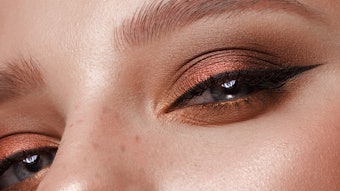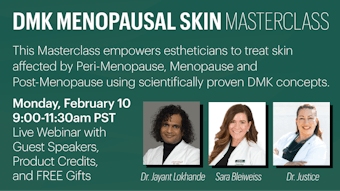By 1998, the staff of the Mona Spa and Laser Center certainly had seen enough laser skin resurfacing crises than we were willing to speak about. The professional quintessence of my search for safe laser use in tandem with skin care techniques took place when one of my clients came to me, distressed, just two weeks after undergoing a CO2 laser resurfacing. She screamed, “I could stab that surgeon in the heart with that laser for not telling me I was going to look like this! Help me, please!”
At the time, I needed to decide on which laser to invest in for the clients of our waxing hair removal business that generates $100,000 annually. In 1999, the spa’s early entry into the laser business involved renting intense pulsed light (IPL) equipment, which was discovered later to be problematic when treating dark skin. I soon learned that all lasers are not alike.
Coming into the light
For three years, the use of Nd:YAG 1064 lasers has rejuvenated our spa’s business, as well as our clients’ skin. Because the combination of high-tech results and soft-touch spa techniques is in increasingly high demand, estheticians are faced with the challenge of charting innovative skin care for surgery practices and other specialty physicians who are eager to experience growth by capitalizing on the explosion of the popularity of the spa and wellness industries.
Light-based equipment selection can be sorted most efficiently by identifying the most common Fitzpatrick Skin Type represented within your market demographic, the educational parameters for application, pain-management issues, the wattage needed, your state’s regulatory laws and your experience in administering treatments.
It is important to offer a versatile range of laser- and light-based technology for busy clients who desire a no-downtime anti-aging procedure. Schedule client consultations for laser technicians one hour before the actual treatment, allowing them time to learn about the client’s top skin concerns, the condition of the complexion, pertinent medical history and current medications, as well as to inform the person fully before they consent to undergo laser procedures.
Offer an incentive, such as a $50 discount on the consultation fee when they receive their first laser procedure. Discuss pricing with your client during the initial visit, and offer options for per-visit pricing and packages. At Mona Spa and Laser Center, our professionals are too busy to offer free consultations, and it is our policy not to quote laser service pricing over the telephone.
It is your professional responsibility to provide informative consultations regarding versatile lasers and to document in writing all discussions pertaining to the outcome of the proposed treatments. Take before and after photographs of all new clients. Many of them forget the depth of their lines, the intensity of their facial redness and the aggression of their hair growth. The results can be remarkable when documented, and clients must be prepared by their service provider during the first consultation of the necessity of going the distance when additional treatments are required. Touch-up treatments can be needed for years.
The most delighted clients are the ones who are the most informed and realistic about the treatment protocol due to a clear understanding that the end result may entail a longer process.
Microdermabrasion and lasers
Purifying facial techniques long have sustained successful estheticians who work with teenage and middle-aged clients. You should continue to practice purifying and cleansing with a cornucopia of fruit-based enzymes and acids containing known antioxidants and skin lighteners to remove all particle matter when preparing the skin for a laser procedure. Professional glycolic peels and pumpkin enzymes dramatically reduce acne bacteria when combined with laser treatments.
The modality that works most efficiently with laser and IPL for skin resurfacing continues to be microdermabrasion. An improvement in acne scarring and brown sun damage is seen when utilizing it. Avoid using aluminum oxide sand because of its potential to produce an allergic reaction to the nickel content in the particles. Sodium bicarbonate sand can be used as a successful alternative.
Business boosters
Will a single laser facial performed at your spa yield a significant improvement in wrinkles and sun damage repair? Yes. According to photography gathered by the Mona Spa and Laser Center, wrinkles improved an average of 205% after one treatment, and invisible sunspots were removed by an average of 33% after one treatment. Today, combined light-based technology contributes to 78% of the facility’s gross service revenues. More than 50% of our total laser business can be attributed to nonablative skin rejuvenation with lasers, surpassing laser hair removal and cellulite reduction. Following are several treatments we provide that involve laser- and light-based services. Proper training is required in order to offer any of these services.
Laser facial. Clients enjoy an innovative, technologically advanced way to promote vibrant, healthy skin. Women and men can experience a youthful appearance by treating those conditions that typically are associated with premature aging and sun damage, such as excessive redness, large pores, uneven skin texture and fine-line wrinkles. This menu offering can treat all skin types and areas of the epidermis, including body skin.
Technology used. Nd:YAG 1064 laser powered by 14,000 watts.
Recommended frequency of treatments. The treatment should take place every two to three weeks in order to diffuse redness and stimulate collagen to shrink enlarged pores and reduce fine lines and wrinkles for the initial six-visit program. Additional treatments may be required to improve skin texture for post-acne scars. Clients may maintain an optimal result with regular monthly visits. The stimulated skin will absorb moisturizing and nourishing ingredients faster, therefore improving the efficacy of recommended products. Excellent and enhanced results appear when combined with classic skin care facials; microdermabrasion; or glycolic, lactic or enzyme peels.
Caution. Metal shield eye protection must be used by the laser practitioner.
Time and cost. This depends on the size of the surface area treated. A typical full-facial treatment is $350 for 25–35 minutes.
Solar facial. For sun-loving clients, this therapy quickly, safely and comfortably removes sunspots and age spots from the face, chest, arms and hands without topical anesthetics. The signs of sun damage will flake off after one or two treatments, leaving clearer, younger-looking skin. This menu item cannot be used safely on tanned skin or Fitzgerald Skin Types IV, V or VI. It can be utilized to treat all areas of skin types I, II and III safely—including body areas—in order to alleviate sun damage.
Technology used. 560–600 wavelength IPL driven by 14,000 watts.
Recommended frequency of treatments. Every three to four weeks in order to lift brown and red sunspots from the skin. It provides excellent results when combined with microdermabrasion between light-based treatments.
Caution. Most manufacturers recommend lenses for eye protection. Do not treat clients who have had sun exposure 14 days prior to an appointment. The sun’s rays will cause overexposure and blistering on treated areas.
Time and cost. This depends on the size of the surface area treated. A typical full-facial treatment is $350 for 25–35 minutes.
De-aging laser facial. Accident victims and post-surgical patients, including those who recently have experienced a face lift or liposuction, seek out this combination therapeutic laser-and-massage treatment for immediate relief from swelling, bruising and pain associated with injury. Clients comfortably can remodel the injured area more quickly in order to return to their normal activities sooner. Environmental and seasonal allergy sufferers can clear their heads, as well as relax and refresh their skin, resulting in a radiant glow. This menu item can be used to treat all skin types and all areas of the skin—including body skin—to improve the circulation of lymph and tiny blood vessels on even the most delicate epidermis. The body treatment module is cleared by the U.S. Food and Drug Administration (FDA) for cellulite reduction and effective body skin toning.
Technology used. Facial therapy: 1-watt diode laser, pneumatic lymph drainage massage and color therapy. Body therapy: 6- x 1-watt diode laser; pneumatic lymph drainage or deep tissue massage; cryogenic.
Recommended frequency of treatments. This therapy is recommended twice a week for skin toning and rejuvenation. It can be performed every day after surgery to increase microcirculation and promote deep tissue healing. The simultaneous application of lymph drainage massage incorporated in the treatment application reduces puffiness and slackened skin. It is excellent when combined with a classic skin care facial or glycolic, lactic or enzyme peels.
Caution. Protect the client’s thyroid area from the light, and recommend that they drink pure water in order to replace fluids diminished by this treatment.
Time and cost. A typical full-facial or partial body treatment is $150 for 35 minutes.
Don’t be fooled
There are plenty of innovative light source applications available that are not lasers at all. Ask yourself these two questions: What is the desired outcome of the procedure in order to meet my clients’ expectations? and What will my clients be willing to pay for the results? Your answers will help you to determine whether you should invest in a certain technology.
An example of a less effective and less costly modality is light emitting diode (LED) technology. Energy output of the appliance is measured in milliwatts, which results in 1,000 times less output than just one regular watt of energy. Treatment frequency is of no concern—a client could be treated every day, if desired. That is why many at-home models for LED are sold. It can be incorporated into facial procedures after extractions to avoid redness and to promote epidermal surface healing. Procedures generally can be used in conjunction with every known classic skin care facial available, and are ideal for clients who are afraid of lasers and IPL. The only caution noted is to protect the client’s thyroid area from light.
All lasers are not alike
Many manufacturers, associations wand institutes offer laser safety workshops that are conducted by expert physicians. Anyone operating a light-based system should obtain a certificate of clinical training on the safety, operation and use of the equipment. It would be unacceptable to practice advanced light-based technology utilizing secondhand knowledge.
Advanced laser training is expensive by most standards of esthetician education. As an employee, be prepared to sign a reimbursement-for-training contract and a noncompete clause if your employer agrees to pay for your instruction.
Laser equipment maintenance contracts are expensive, and, in some cases, replacement parts are extremely costly as well. Nonphysician liability and property damage also can add up. In 2005, professional liability coverage for nonphysician laser technicians became available.
As the industry flourishes, make sure that you thoroughly investigate and learn about all light-based technologies before introducing laser facials to your clientele.










